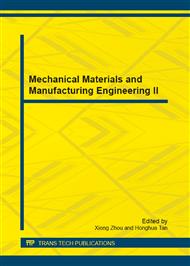p.316
p.320
p.325
p.331
p.337
p.343
p.349
p.355
p.361
Research on the Performance of End Face Seal in Space Liquid Lubrication System
Abstract:
Based on the end-face mechanical seal in Space Liquid Lubrication System, a geometry model of hydrophobic surface was presented. The Reynolds equation for controlling film pressure between the faces of micro-sculpt was solved by using the finite element method. The influence rules on end-face film pressure were studied in the surfaces of zero sculpt, micron positive (protruding) and micron negative (recessed). The effects of surface tension of the sealing medium on film stiffness, opening force and leakage rate were studied at different area ratio of micron positive (negative) and the end face. The pressure balance performance was construed between the seal end face. The calculation results show that the leakage rate will be lessen more than 30% by the sculpting of micron positive (negative). The opening force and leakage rate decrease linearly with the increasing of area ratio while the area ratio () of micron positive (negative) and the end face is less than 0.2; the opening force and leakage rate reaches the minimum respectively as =0.2; but the film stiffness arrives at the maximum as =0.2. The closing force is always greater than opening force, and the seal condition is fulfilled between the end face. The research results establish the theory basis for further analysis on the performance of space liquid lubrication.
Info:
Periodical:
Pages:
337-342
Citation:
Online since:
December 2012
Authors:
Keywords:
Price:
Сopyright:
© 2013 Trans Tech Publications Ltd. All Rights Reserved
Share:
Citation:


